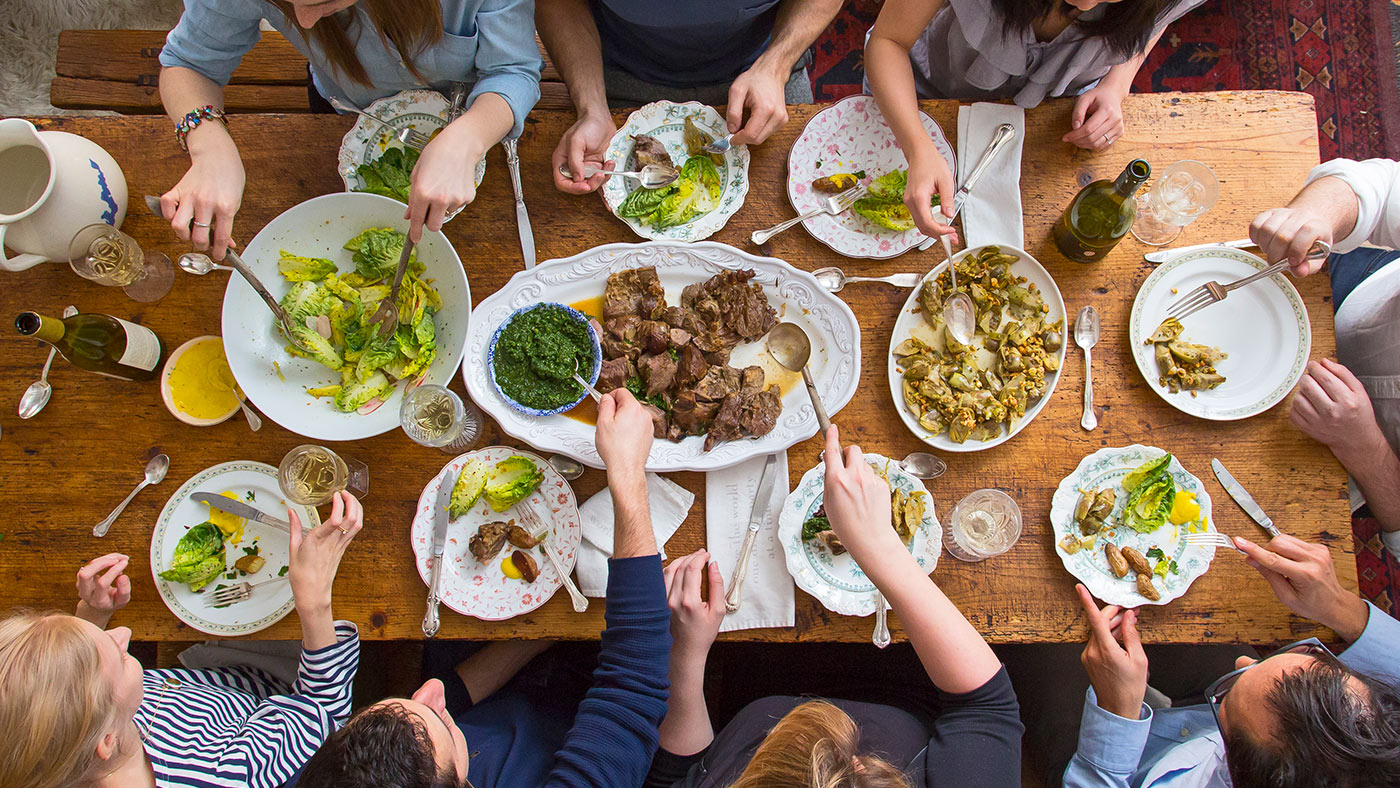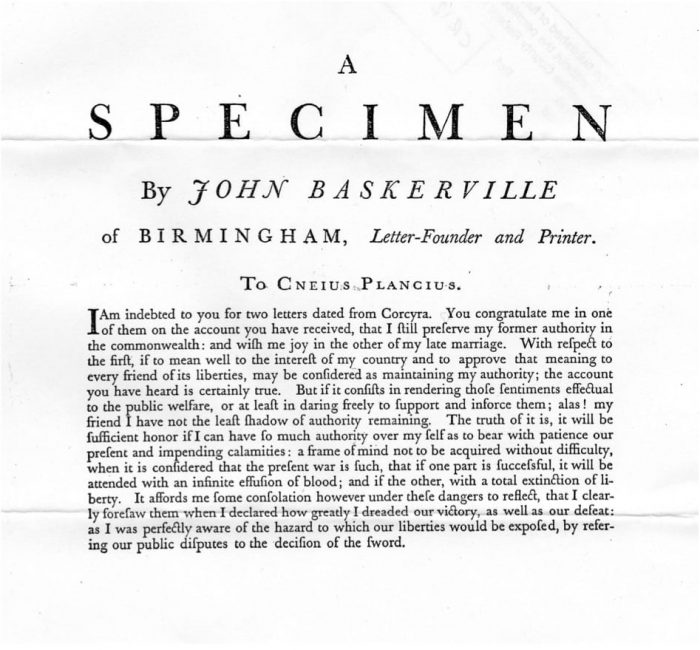
I was reading an article the other day called “A Guide to Combining Fonts,” and in the first half of the article, the author argues that it’s often better not to combine fonts at all—if you can, just use one font family. He shows this as a great example of what can be done with a single typeface (in this case, Baskerville):

Then the article mentions that documentarian Errol Morris did an experiment with typefaces back in 2012, and concluded that Baskerville is one of the most trustworthy of all font families. A student’s simple experiment confirmed this practically, when his grades improved dramatically after setting his papers in a different typeface. The trustworthiness of his words was affected by the font family he set them in. Often times people can’t receive what we say because of the way we say it.
And that got me thinking again about this idea of …
Art as Hospitality
One of the first things that most attracted me to Renew the Arts wasn’t the mission statement, or the art that had been produced, or the profound understanding of the Scriptures I saw in what Michael and Justus believed and practiced about the arts. It was, quite simply, the hospitality I was shown when I was with them. I think anyone who has interacted with this group in person will tell you, “what stands out most is how welcome you feel.”
This should not have so rare a place in the church. The Bible counts hospitality as a mark of a true Christian, “Contribute to the needs of the saints and seek to show hospitality” (Romans 12:13). We lack hospitality when we say to a person, “Go in peace, be warmed and filled,” without giving them the things needed for the body (James 2:16).
At the same time, I wouldn’t call giving a person a rough blanket and some instant ramen “hospitality” (unless, of course, it’s all you’ve got to give).
So What is Hospitality?
It seems to me that hospitality involves a careful consideration for the experience and comfort of your guests. Justus mentioned in the podcast that God labored so much in those first six days to host us—to make a place that wasn’t merely adequate to sustain human life, but was superabundantly lavish—sparing no expense, exhausting His resources to the point that it was fitting for Him to rest on the seventh. 1
And shouldn’t we exhaust our resources to show hospitality, like a son representing his father in his father’s house with his father’s things?
Well, those first six days are called “Creation,” so I think it should be fair to say that there can be …
No Hospitality Without Creativity
Any excellent lodging experience will involve a lot of art. You begin with architecture, and within that—lights, colors, textures, furniture, and decorations. Then culinary arts. Clothing appropriate to the occasion. Paintings or sculptures that serve as conversation pieces. Someone might pull out a guitar or sit down at a piano or tell a story. You might put on some music or a movie. The list could go on.
And when all of those various elements come together harmoniously, they move us to exclaim, “That is hospitality! I feel like my hosts have taken great care to consider me in every way.” And don’t we want to return again to the hospitable house? Isn’t this attractive? Nothing draws you into a community like great hospitality.
“Great” Hospitality is Subjective
Hospitality depends on a careful consideration of the guest. It’s an art. Some formulas of etiquette may exist for a generally appealing experience, but it’s pretty easy to feel the insincerity of hospitality when it seems the experience follows a template too closely, without much to make it unique or personal.
I considered these things a lot when I designed the Renew the Arts website. I hesitate to say this, because I worry that I have invited you to look around for something to criticize. But you know what? If I could make our site more hospitable to you, I want to. Let me know if there’s a light out in the bathroom. Or if the colors give you a headache. Or if things aren’t where you’d expect them to be. I shouldn’t be hurt by your criticism. I should have considered these things before you got here, but your comments will help the next guest.
But I do hope that our website might give a little taste of the kind of hospitality you might experience over a meal with us.
Hospitality, But Not For its Own Sake
People should never be terminally attracted to our hospitality as our end goal. But rather our hospitality should be a sign that points beyond us to a destination which has only one Way to Him. We shouldn’t be trying to make a sign so admired that people can’t help but slow down and rubberneck as they drive by. Nor should we make a sign so poorly that people slow down to take pictures to post on r/crappydesign. The gauge of a sign’s quality is how well it gets its intended audience where it’s pointing, without any distraction or confusion.
When our hospitality doesn’t draw too much attention (negative or positive) to itself, it lends credential to our message. Our hospitality makes our message more trustworthy, like Baskerville.
- I have considered the portion of Isaiah 40:28, “He does not faint or grow weary,” but here I’m just inviting you to play with this idea with me, that the picture we have is of God sparing no expense and going the extra mile. He went as far as we could ever tell. Try to imagine something you can’t possibly imagine; that’s what He held back. ↩


Thank you for your thoughts here, Mr. Hein. Hospitality is a powerful art form, not to mention our Christian duty.
You may not have been aware of it, but your choice of “Baskerville” type-font as an example is serendipitous. “Baskerville” is the font used to print the Book of Common Prayer since 1760, and has been used globally since then. There are variants now, of course, but it is still probably one of the most widely experienced fonts while to pray and sing Scripture.
http://justus.anglican.org/resources/bcp/1662/baskerville.htm
M.A.B.